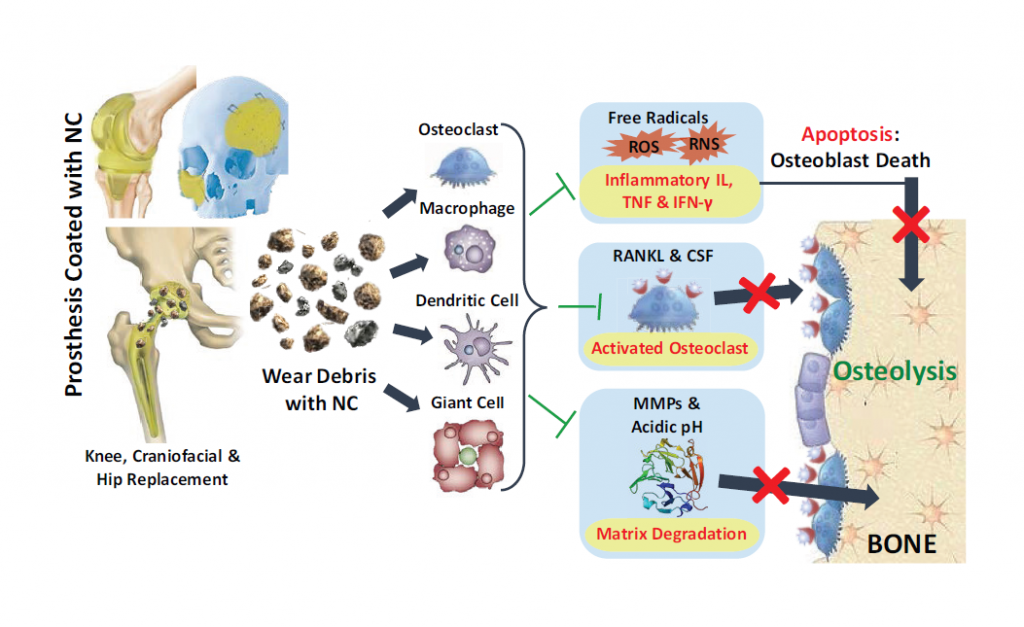New Year, New You: How an Anti-Inflammatory Coating Can Keep Joint Implants Moving Pain-Free for Longer
January 7, 2016

Showing the potential benefits of a prosthesis coated with the anti-inflammatory agent nanoceria
As we start the New Year, many of us will be making resolutions or goals about our physical health—promises to eat healthier and to exercise more often. For those of us who are older, ages 50 and above, we may have some specific health concerns, like chronic joint pain.
When it comes to our joints, one option that has become more and more prevalent for pain relief from conditions like arthritis is total joint replacement (TJR). Unfortunately, despite the technological advances and improvements in treating these types of conditions, TJR still remains the final treatment option in many cases. The Academy of Orthopedic Surgeons state that 90 percent of patients who undergo knee replacement surgery report a significant reduction in pain.
And the costs of these type of surgeries add up. TJR costs $10 billion annually, and the annual hospital costs associated with these procedures are projected to exceed $65 billion by 2015. Additionally, because of osteolysis (bone loss) rates of up to 40 percent, as well as chronic inflammation due to the debris of the degrading implant, 10 to 15 percent of these surgeries will fail, causing additional pain. Patients will then need revision surgeries, which cost 40 percent more than TJR surgeries. In the U.S., more than $1 billion is spent just on revision surgeries each year. Recovery time for patients is also longer with revision surgeries.
To reduce these health care costs, Sudipta Seal, Ph.D., and his team are currently developing a coating involving nanoceria (NC) for implants that would potentially reduce inflammation, promote bone integration of the implant, and thus lengthen the lifetime of the implant while reducing the number of revision surgeries.
NC has many biological applications, and within this budding technology, one of them would be as an anti-inflammatory agent with minimizing corrosion of the joint implant via restoring the redox balance in the surrounding environment. Redox is short for chemical reduction-oxidation reaction, which relates to the high number of free radicals that are created from the use of the joint replacement and the resulting inflammation and bone loss.
To give a very brief Chemistry 101 primer: a free radical is an unstable molecule that arises when weak bonds split, leaving it with unusual, unpaired electrons. This instability causes it to go around, attacking the nearest molecule so that it can steal its electrons. Then that attacked molecule becomes a free radical who then will repeat this process of theft until an antioxidant comes and restores order by giving their free electrons, neutralizing the free radical attacks that would lead to ultimate cell and tissue damage.
Another benefit of Seal’s nascent composition has to do with the roughness of the implant itself. Bone integration is a very important component of a successful TJR surgery, meaning that the patient’s bone needs to accept this foreign body as its own and does not reject it. This coating’s roughness has been reduced, so the chances of bone loss would be reduced, as well as the chance of implant failure and the subsequent revision surgery.
—
New Year, new you? For many Americans, it may mean receiving new joint replacements, and Sudipta Seal’s research may help to keep that new knee or new hip in for a lot longer, for a lot less money, and with a lot less pain. To learn more, contact Brion Berman.
Written by Deborah Beckwin.